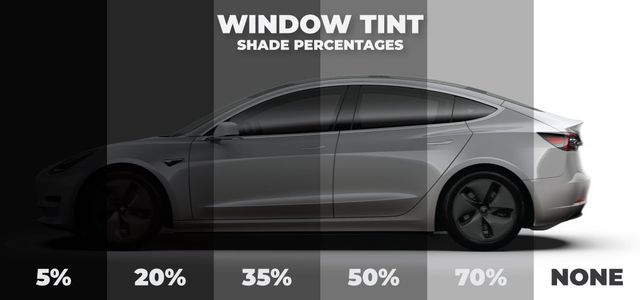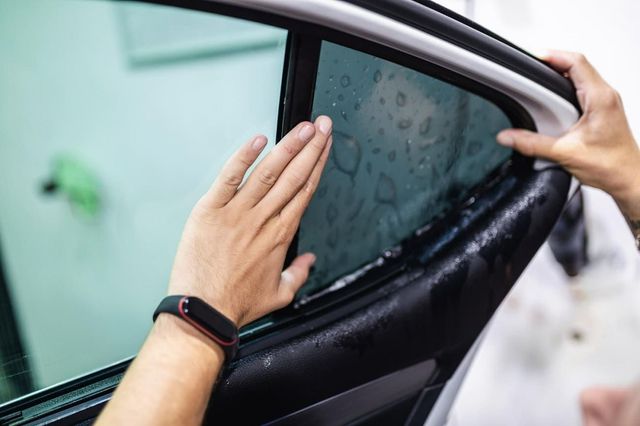Window Tinting Laws and Guidelines: What You Required to Know Prior To Tinting Your Auto
Before continuing with window tinting for your vehicle, it is essential to familiarize on your own with the diverse legislations and guidelines that control this practice throughout different states. These laws dictate the permissible levels of color darkness, usually determined by visible light transmission (VLT) percentages, and consist of details specifications for front windscreens intended at making certain road security.
Review of Window Tinting Rules
Window tinting legislations are frequently based on variation across different jurisdictions, mirroring regional guidelines and security factors to consider. These legislations determine the permissible degrees of tint darkness and reflectiveness on automobile windows, making certain that chauffeurs maintain sufficient visibility while also safeguarding versus hazardous UV rays and warmth.
Many guidelines identify window tinting based on the Visible Light Transmission (VLT) portion, which suggests the quantity of light that can pass via the home window. Generally, lower VLT percents signify darker tints. Regulations typically set apart between the front, side, and back windows, with more stringent constraints related to the front windshield to improve safety for both the motorist and various other road individuals.
In addition, some jurisdictions enforce limitations on the reflectivity of the color, protecting against extreme glare that could impair presence. Exceptions to these legislations may exist for people with certain medical problems needing extra sun defense. Compliance with home window tinting guidelines is crucial, as violations can lead to fines, required removal of the color, and prospective increases in insurance costs. For that reason, it is necessary for automobile owners to acquaint themselves with neighborhood regulations before proceeding with home window tinting setups.
State-by-State Tint Regulations
Understanding the details window tinting policies in each state is crucial for automobile proprietors looking for to abide by the regulation. Each state in the U.S. has established its very own collection of rules regulating home window tinting, which can vary significantly. These regulations often dictate the allowable levels of tint darkness, the sorts of windows that can be tinted, and any kind of medical exemptions that may use.
For instance, states like California have stringent restrictions on color darkness for front home windows, while others, such as New Mexico, may enable darker colors. Additionally, certain states mandate details visibility percents for numerous windows, consisting of the windscreen, front side windows, and rear home windows. It is crucial for automobile proprietors to acquaint themselves with their state's legislations to prevent prospective penalties or fines.
In addition, some states may need a certification sticker label to be positioned on tinted home windows, showing compliance with state legislations. Failure to follow these policies not just risks legal effects but can likewise affect safety and security and exposure while driving. Lorry owners need to carry out comprehensive research study or get in touch with neighborhood authorities to ensure complete understanding and conformity with state-by-state color laws.
Allowed Color Types and levels
Several car owners might be stunned to find out that enabled tint levels and kinds differ commonly across various states. Each state has actually developed its own guidelines relating to the allowable darkness and reflectivity of home window color, often determined by Visible Light Transmission (VLT) portions. VLT describes the quantity of light that can go through the colored windows; hence, a reduced percentage indicates a darker color.

Furthermore, the sorts of color products enabled can differ, with some states prohibiting mirror-like or metal coatings. It is essential for automobile proprietors to acquaint themselves with their state's details regulations to ensure compliance. Non-compliance can cause penalties, obligatory removal of the color, or various other legal effects, making it crucial to comprehend these policies prior to waging installation.
Medical Exceptions for Tinting
While not all states provide allowances for clinical exemptions relating to window tinting, those that do acknowledge the requirement for particular individuals to enhance visibility and comfort due to clinical problems. Different medical conditions, such as lupus, skin cancer, and specific eye disorders, can make people particularly sensitive to sunlight. Consequently, these people might call for darker colors to protect themselves from harmful UV rays and glow.

It is very important to note that also with a medical exception, there may still be limitations on the level of tint permitted. Compliance with state laws makes sure that people are both secured and within legal limitations. Those thinking about clinical exemptions need to contact their neighborhood Department of Motor Vehicles or equivalent authority to comprehend the procedures and demands necessary to use for an exemption efficiently.
Penalties for Non-Compliance
Failing to abide by window tinting regulations can result in substantial fines, which differ by state. Law enforcement agencies are empowered to issue citations for cars that do not stick to the specified tinting guidelines. These penalties typically include fines, which can vary from modest amounts to a number of hundred bucks, depending on the intensity of the offense and the state in concern.
In some territories, duplicated offenses might cause escalating fines or additional penalties, such as required court looks. Non-compliance might demand the removal see this site of prohibited tinting, often at the proprietor's expenditure. In severe instances, regular offenders might encounter suspension of their automobile registration up helpful hints until compliance is achieved.
Furthermore, insurance coverage ramifications may develop from getting several citations for window color infractions. Insurers might see such infractions as an indicator of riskier actions, possibly bring about raised costs or problem in protection.
To avoid these fines, it is important for car proprietors to familiarize themselves with their neighborhood window tinting legislations and guarantee that their automobile complies (Window Tinting). This positive strategy not only stays clear of legal implications however likewise promotes road safety and security
Verdict

Most policies categorize home window tinting based on the Visible Light Transmission (VLT) percent, which shows the quantity of light that can Find Out More pass via the window. Conformity with window tinting regulations is vital, as violations can result in fines, compulsory elimination of the tint, and prospective rises in insurance premiums.Understanding the details home window tinting regulations in each state is crucial for automobile owners seeking to abide with the regulation. These policies typically dictate the allowable levels of color darkness, the types of home windows that can be tinted, and any type of clinical exemptions that may apply.
For instance, states like California have rigid restrictions on color darkness for front windows, while others, such as New Mexico, may allow darker colors.